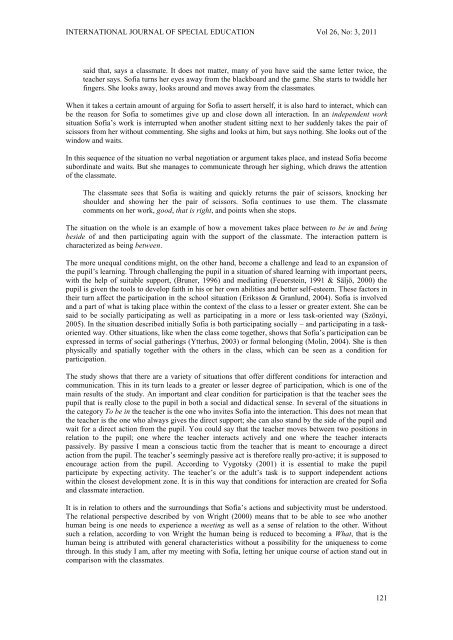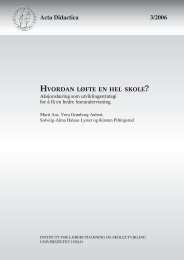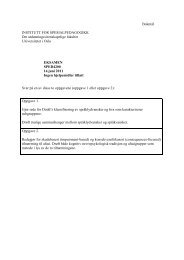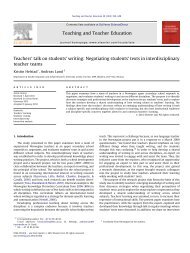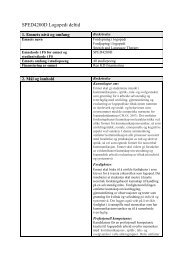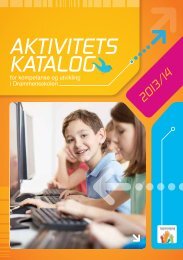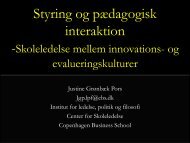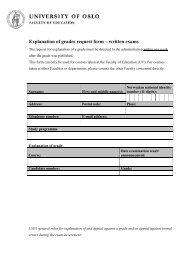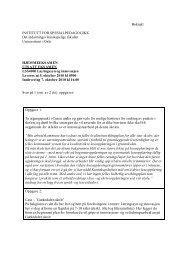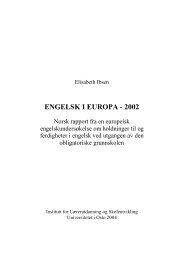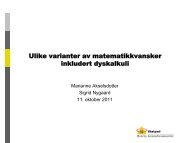International Journal Special Education
International Journal Special Education
International Journal Special Education
Create successful ePaper yourself
Turn your PDF publications into a flip-book with our unique Google optimized e-Paper software.
INTERNATIONAL JOURNAL OF SPECIAL EDUCATION Vol 26, No: 3, 2011said that, says a classmate. It does not matter, many of you have said the same letter twice, theteacher says. Sofia turns her eyes away from the blackboard and the game. She starts to twiddle herfingers. She looks away, looks around and moves away from the classmates.When it takes a certain amount of arguing for Sofia to assert herself, it is also hard to interact, which canbe the reason for Sofia to sometimes give up and close down all interaction. In an independent worksituation Sofia’s work is interrupted when another student sitting next to her suddenly takes the pair ofscissors from her without commenting. She sighs and looks at him, but says nothing. She looks out of thewindow and waits.In this sequence of the situation no verbal negotiation or argument takes place, and instead Sofia becomesubordinate and waits. But she manages to communicate through her sighing, which draws the attentionof the classmate.The classmate sees that Sofia is waiting and quickly returns the pair of scissors, knocking hershoulder and showing her the pair of scissors. Sofia continues to use them. The classmatecomments on her work, good, that is right, and points when she stops.The situation on the whole is an example of how a movement takes place between to be in and beingbeside of and then participating again with the support of the classmate. The interaction pattern ischaracterized as being between.The more unequal conditions might, on the other hand, become a challenge and lead to an expansion ofthe pupil’s learning. Through challenging the pupil in a situation of shared learning with important peers,with the help of suitable support, (Bruner, 1996) and mediating (Feuerstein, 1991 & Säljö, 2000) thepupil is given the tools to develop faith in his or her own abilities and better self-esteem. These factors intheir turn affect the participation in the school situation (Eriksson & Granlund, 2004). Sofia is involvedand a part of what is taking place within the context of the class to a lesser or greater extent. She can besaid to be socially participating as well as participating in a more or less task-oriented way (Szönyi,2005). In the situation described initially Sofia is both participating socially – and participating in a taskorientedway. Other situations, like when the class come together, shows that Sofia’s participation can beexpressed in terms of social gatherings (Ytterhus, 2003) or formal belonging (Molin, 2004). She is thenphysically and spatially together with the others in the class, which can be seen as a condition forparticipation.The study shows that there are a variety of situations that offer different conditions for interaction andcommunication. This in its turn leads to a greater or lesser degree of participation, which is one of themain results of the study. An important and clear condition for participation is that the teacher sees thepupil that is really close to the pupil in both a social and didactical sense. In several of the situations inthe category To be in the teacher is the one who invites Sofia into the interaction. This does not mean thatthe teacher is the one who always gives the direct support; she can also stand by the side of the pupil andwait for a direct action from the pupil. You could say that the teacher moves between two positions inrelation to the pupil; one where the teacher interacts actively and one where the teacher interactspassively. By passive I mean a conscious tactic from the teacher that is meant to encourage a directaction from the pupil. The teacher’s seemingly passive act is therefore really pro-active; it is supposed toencourage action from the pupil. According to Vygotsky (2001) it is essential to make the pupilparticipate by expecting activity. The teacher’s or the adult’s task is to support independent actionswithin the closest development zone. It is in this way that conditions for interaction are created for Sofiaand classmate interaction.It is in relation to others and the surroundings that Sofia’s actions and subjectivity must be understood.The relational perspective described by von Wright (2000) means that to be able to see who anotherhuman being is one needs to experience a meeting as well as a sense of relation to the other. Withoutsuch a relation, according to von Wright the human being is reduced to becoming a What, that is thehuman being is attributed with general characteristics without a possibility for the uniqueness to comethrough. In this study I am, after my meeting with Sofia, letting her unique course of action stand out incomparison with the classmates.121


